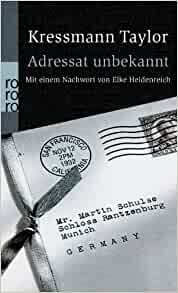Take a photo of a barcode or cover
emotional
reflective
sad
fast-paced
Plot or Character Driven:
A mix
Strong character development:
Yes
Loveable characters:
Yes
Diverse cast of characters:
N/A
Flaws of characters a main focus:
No
dark
emotional
sad
fast-paced
Plot or Character Driven:
Character
Strong character development:
No
Loveable characters:
No
Diverse cast of characters:
Yes
Flaws of characters a main focus:
Yes
challenging
dark
sad
fast-paced
Plot or Character Driven:
Plot
Strong character development:
Yes
Loveable characters:
Complicated
Diverse cast of characters:
Yes
Flaws of characters a main focus:
Complicated
emotional
sad
tense
fast-paced
emotional
fast-paced
dark
reflective
sad
fast-paced
emotional
informative
sad
fast-paced
Plot or Character Driven:
Plot
Strong character development:
Complicated
Loveable characters:
No
Diverse cast of characters:
N/A
Flaws of characters a main focus:
Yes
For such a slim book, this one packs a powerful punch!
First published in 1938, Address Unknown is a timely reminder of the invidious nature of fascism and the ways in which this warped ideology can tear once-close people apart.
It tells the story of a friendship between two men — a Jewish art dealer and his business partner — that is tested by political events in the lead up to the Second World War.
Martin Schulse and Max Eisenstein run an art gallery together in San Francisco, but when Martin repatriates to Germany their friendship continues via correspondence.
Through their letters, which span the period from November 1932 through to March 1934, we come to understand the closeness of their relationship and the way in which it begins to fracture as events in Europe unfold.
This tale takes less than an hour to read, but I dare say it will stay with me for the rest of my life. I came away from it reeling and I’ve been mulling over the implications ever since.
To read a more detailed review, please visit my blog.
First published in 1938, Address Unknown is a timely reminder of the invidious nature of fascism and the ways in which this warped ideology can tear once-close people apart.
It tells the story of a friendship between two men — a Jewish art dealer and his business partner — that is tested by political events in the lead up to the Second World War.
Martin Schulse and Max Eisenstein run an art gallery together in San Francisco, but when Martin repatriates to Germany their friendship continues via correspondence.
Through their letters, which span the period from November 1932 through to March 1934, we come to understand the closeness of their relationship and the way in which it begins to fracture as events in Europe unfold.
This tale takes less than an hour to read, but I dare say it will stay with me for the rest of my life. I came away from it reeling and I’ve been mulling over the implications ever since.
To read a more detailed review, please visit my blog.
What a painful look at humanity this was. I am tempted to re-read it just to take in the full gravity of it. But that will wait until I can remember to breathe again.




